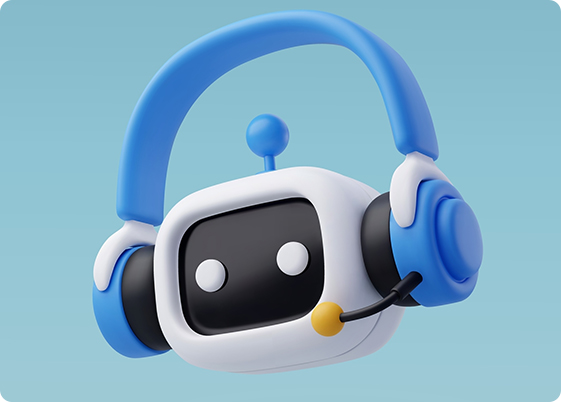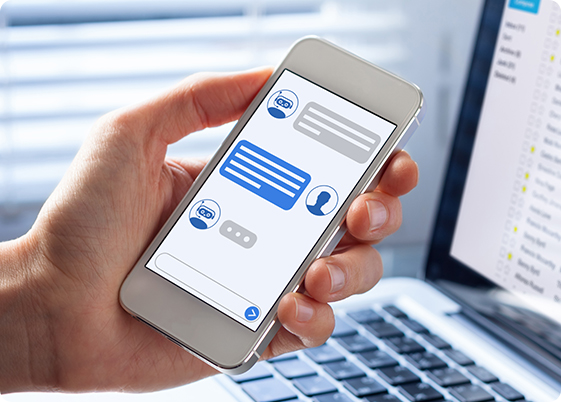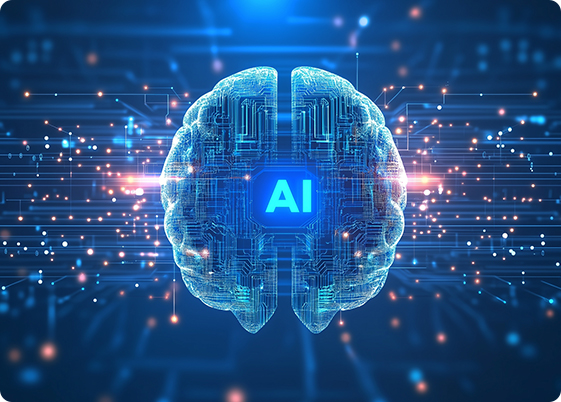
The customer service landscape is continuously evolving, with customer service chatbots leading the transformation. In 2025, these AI-powered virtual assistants will be more sophisticated than ever, delivering faster and more personalized support. Businesses across various industries are increasingly adopting chatbots for customer support to enhance customer satisfaction, reduce operational costs, and streamline processes.
In this article, we’ll explore everything you need to know about customer service chatbots—their types, popularity, functionality, and the numerous benefits they offer. We’ll also examine the future of customer service chatbots and how they will continue to shape the customer experience.
What is a Customer Service Chatbot?
A customer service chatbot is a software application that simulates human conversations using artificial intelligence (AI) or pre-programmed rules. It is designed to assist customers by providing automated responses to inquiries, handling complaints, or directing users to human agents when necessary.
The main purpose of a customer support chatbot is to offer fast, consistent, and efficient customer service. From answering frequently asked questions to assisting with purchases or troubleshooting technical issues, these chatbots serve as the first point of contact for many businesses.
Types of Customer Service Chatbots
The effectiveness of a customer service chatbot largely depends on its type and functionality. Here are the three primary types of chatbots used in customer support:

AI Agents
AI agents represent the most sophisticated form of customer service AI chatbots. These bots use machine learning and natural language processing (NLP) to understand and process customer inquiries with remarkable accuracy. They are capable of holding conversations that feel more human-like, using the data from previous interactions to personalize responses.
Take, for example, the AI-powered virtual assistant used by Bank of America, named "Erica." Erica can manage various tasks such as checking balances, transferring funds, or providing financial advice. The bot not only understands customer inquiries but also learns from every interaction, becoming more efficient and accurate with time.

AI Chatbots
AI chatbots are also based on machine learning, but they tend to be more generalized in their approach. These bots can handle a wide range of inquiries, from basic FAQs to more complex troubleshooting. They excel at processing data and providing answers quickly, but are not as autonomous as AI agents.
For example, KLM Royal Dutch Airlines uses an AI customer service chatbot that allows customers to book flights, check in, and receive real-time updates about flight statuses. This chatbot is available on several channels, including Facebook Messenger, Twitter, and WhatsApp, making it incredibly accessible and versatile for global customers.
Rule-Based Chatbots
Rule-based chatbots are the simplest form of customer service chatbots. They operate using pre-programmed rules or decision trees that match keywords or phrases from customer inputs to provide relevant responses. While they are limited in scope, they are effective for handling repetitive tasks and basic inquiries.
For example, many telecom providers use rule-based chatbots to answer common questions like "What’s my bill amount?" or "How do I change my account password?" These bots help manage simple tasks, reducing the strain on human customer service teams.
Why are Customer Service Chatbots so Popular?
The widespread adoption of customer support AI chatbots is driven by technological advancements, cost-saving benefits, and ease of implementation. Businesses are finding that chatbots not only improve customer experiences but also optimize operations.

Better Technology
With advancements in AI and machine learning, modern AI customer service chatbots can deliver near-human conversational experiences. Features like sentiment analysis and real-time language translation further enhance their capabilities. Many companies are integrating tech innovations in customer support to offer seamless, efficient service across multiple channels.
For example, Mastercard uses an AI customer service chatbot named "Mastercard AI" to resolve customer complaints, verify transactions, and even offer financial advice in real time. This AI bot has improved the accuracy and speed of resolving customer inquiries, showcasing the growing sophistication of chatbot technology.

More Cost-efficient
Customer service chatbots offer substantial cost savings by reducing the need for large customer support teams. A single chatbot can handle thousands of interactions simultaneously, minimizing the expense of hiring, training, and managing human agents.
A prime example is the use of chatbots for customer support in large e-commerce platforms. Amazon’s chatbot, for instance, handles millions of customer interactions daily, ranging from order tracking to troubleshooting, without requiring a large customer service team.
Easy to Set Up
Deploying chatbots for customer support has become increasingly accessible. Many platforms provide no-code or low-code chatbot builders, allowing businesses to design and launch AI-powered assistants without extensive technical expertise. This makes chatbots a practical choice for companies of all sizes.
How Does a Customer Service Chatbot Work?
The functionality of a customer service chatbot relies on a combination of AI, machine learning, and natural language processing with existing business systems. Here’s how they operate:
- Understanding the Query
Using natural language processing, chatbots can interpret the text or voice input from customers, identifying the key elements of the inquiry such as context, intent, and sentiment. - Processing the Request
Once the query is understood, the bot accesses its knowledge base or integrates with the business’s customer relationship management (CRM) system to find the most appropriate response. - Providing a Response
The chatbot provides an accurate, contextually relevant answer. Depending on the bot’s sophistication, the response may be a simple answer or a series of actions (e.g., booking an appointment or making a transaction). - Learning from Interactions
Many AI customer service chatbots are designed to improve their accuracy over time. With the help of machine learning, these bots analyze past interactions to continuously refine their responses.
10 Benefits of Customer Service Chatbots
The benefits of chatbots in customer service are extensive, enhancing both customer experience and operational efficiency. Let’s explore these advantages in greater detail:
24/7 Availability
A key advantage of customer service chatbots is their round-the-clock availability. Unlike human agents who work in shifts, chatbots provide support at any time of day, ensuring that customers receive immediate assistance, even during holidays or peak hours.
Consider a company like Zappos, which uses chatbots for customer support to handle product inquiries and process returns. Zappos' chatbot is always accessible, ensuring customer satisfaction no matter when the inquiry occurs.

Faster Response Times
A study by Zendesk revealed that 42% of customers expect a response within 60 minutes of submitting a support request, and 32% expect a response within 10 minutes. With chatbots for customer support, businesses can meet these expectations and deliver timely assistance.
Accordingly, customer service AI chatbots offer instant responses, significantly reducing wait times. For industries where time-sensitive support is crucial, such as finance or healthcare, chatbots provide prompt assistance without delay.
Cost Savings
Companies can reduce operational costs by employing chatbots for customer support. Automating routine tasks lowers the need for large support teams, allowing businesses to allocate resources more efficiently.
In the telecommunications industry, Vodafone implemented a customer service AI chatbot named TOBi, which handles around 70% of customer service queries. This has significantly reduced the workload of human agents, leading to both cost savings and improved service efficiency.
Improved Efficiency
By handling repetitive and time-consuming tasks, customer service chatbot AI solutions free up human agents to focus on more complex and high-value interactions. This improves productivity and overall service quality.
Personalization
According to Accenture, 91% of consumers are more likely to shop with brands that provide personalized recommendations. With AI customer service chatbots, businesses can ensure they meet these expectations by offering customized support.
With access to customer data and preferences, AI customer service chatbots deliver personalized interactions. They recommend products, suggest solutions, and tailor conversations to meet individual customer needs, enhancing the overall experience. For example, Netflix employs chatbots that not only assist customers with account issues but also suggest content based on a user's viewing history. This creates a more engaging and tailored experience for customers, driving higher satisfaction and engagement.
Scalability
A customer support AI chatbot can manage thousands of conversations simultaneously. Unlike human agents, chatbots scale effortlessly to accommodate surges in customer inquiries during sales events, product launches, or service outages.
For example, Pizza Hut uses an AI chatbot to assist customers with ordering pizzas, checking menu options, and processing payments. During peak hours or promotional events, the bot can scale up to handle large volumes of orders and customer queries without any issues.
Multilingual Support
Businesses serving global markets benefit from customer service chatbots that offer multilingual support. Advanced chatbots can detect a user’s preferred language and respond accordingly, breaking down communication barriers.
L'Oréal uses a customer support AI chatbot that can speak multiple languages, enabling the global beauty brand to interact with customers from different countries. This multilingual capability allows L'Oréal to maintain a consistent customer experience across various regions.
Data Collection & Insights
A report from Salesforce found that 52% of customers expect companies to anticipate their needs and make relevant suggestions based on past interactions. Customer service chatbot AI systems gather valuable data on customer interactions, including common queries, satisfaction levels, and purchasing behavior. Businesses can analyze this data to identify trends, improve service strategies, and optimize marketing efforts.
Seamless Integration
Customer support chatbots integrate with existing business tools like CRM systems, help desks, and e-commerce platforms. This enables chatbots to access customer information in real-time, delivering contextually relevant responses.
Consistency & Accuracy
Unlike human agents, AI customer service chatbots provide consistent and accurate information. They eliminate the risk of errors caused by fatigue or lack of knowledge, ensuring customers receive reliable support every time.
To illustrate, in the retail industry, H&M uses a chatbot to provide consistent support for customers across all channels, whether online or in-store. This ensures that customers receive accurate information about product availability, store locations, and promotions, maintaining a uniform experience across multiple touchpoints.
The Future of Customer Service Chatbots
The future of customer service chatbots looks promising as AI continues to advance. Businesses will leverage more intelligent bots capable of delivering hyper-personalized support, automating complex workflows, and even anticipating customer needs.
We can expect increased adoption of voice-enabled chatbots, improved emotional intelligence, and deeper integration with augmented reality (AR) and virtual reality (VR). In particular, industries like retail, healthcare, and finance will benefit from these advancements.
Furthermore, companies utilizing AI in call centers will see significant improvements in operational efficiency. AI-powered bots will collaborate seamlessly with human agents, providing real-time suggestions and handling routine tasks, leading to enhanced customer experiences.
Conclusion
In 2025, customer service chatbots will remain essential for businesses seeking to deliver efficient and personalized support. With benefits like 24/7 availability, cost savings, and data-driven insights, chatbots enhance customer satisfaction and streamline operations. For organizations aiming to stay competitive, implementing AI customer service chatbots is no longer optional—it’s a necessity. Embracing this technology will unlock new levels of efficiency and customer loyalty, ensuring long-term success in the evolving service landscape.
If you’re looking to stay ahead of the competition, now is the time to consider implementing a customer service chatbot AI solution. For more insights on customer service jobs, check out HSG USA, where we connect professionals with exciting opportunities in customer service and beyond.
Frequently Asked Questions
How do AI-powered chatbots improve customer service?
AI-powered chatbots enhance customer service by offering quicker, more accurate responses and personalizing interactions based on customer data. They can handle complex queries and provide 24/7 support, improving overall customer satisfaction.
What are the biggest challenges in implementing chatbots?
Challenges include ensuring the chatbot understands diverse customer inquiries, integrating with existing systems, and maintaining a high level of customer satisfaction while automating tasks.
Are chatbots capable of handling multiple languages?
Yes, customer service chatbots can be designed to handle multiple languages, providing seamless support to global customers.
What industries benefit the most from customer service chatbots?
Industries such as e-commerce, telecommunications, banking, and healthcare benefit greatly from chatbots for customer support, as they streamline processes and improve customer service efficiency.
 US
US Canada
Canada Colombia
Colombia India
India Jamaica
Jamaica Philippines
Philippines UK
UK SA
SA
